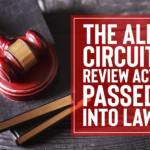How the False Claims Act Works
Either the government or a private citizen can initiate a suit under the False Claims Act. The portion of the False Claims Act that permits a private citizen to file suit on behalf of the government is known as the qui tam (pronounced key-tam or kwee-tam) provision. Qui tam is the abbreviated version of the Latin phrase qui tam pro domino rege quam pro se ipso, meaning “who sues on behalf of the King, as well as for himself.” Qui tam suits have a long history, stretching back to the medieval times of the English monarchy. In modern society, a qui tam relator (as the person who files a False Claims Act case is known) sues on behalf of the government (the “King”) and for himself or herself to recover money taken from the government by fraud.
A False Claims Act case is initiated by the qui tam relator with the filing of a civil complaint in federal court. This is the same general procedure used to initiate any civil action, except for three important distinctions. First, the complaint is filed under seal, or in secret, and is shielded from public view. Nobody knows that the suit has been filed and nobody can find out without the Court’s permission. Second, the complaint is not served on the defendant. This prevents the defendant from knowing that someone has accused it of fraud and permits the government to begin its investigation without the wrongdoer’s knowledge. Third, a copy of the complaint, along with substantially all evidence in the relator’s possession, is delivered to the Department of Justice to permit the government to evaluate the allegations in the complaint and the merits of the suit.
“Once the Investigation is complete, the government will make a decision as to whether it wishes to intervene in the case.”
The government has sixty days to decide whether or not it will intervene in the action. The government may, and usually does, seek to extend this time period in order to continue its investigation of the alleged fraud. In fact, extensions are so common that it is not unusual for cases to continue pending under seal for anywhere from one to three years or more.
During the investigative phase of the case, government agents from the Office of Inspector General, FBI, Defense Criminal Investigative Service or a number of other agencies may execute subpoenas or search warrants and perform document reviews and witness interviews to develop a thorough understanding of the relator’s allegations. The agents work closely with attorneys from the Department of Justice. The defendant may also agree to routinely produce documents as a means of cooperating with the investigation.
Once the investigation is complete, the government will make a decision as to whether it wishes to intervene in the case. If the government believes the suit has merit, the government will often attempt to settle the case with the defendant while the action is still pending under seal. If negotiations are successful, the case usually will be resolved prior to being unsealed. If negotiations are unsuccessful, the case will be unsealed and the government and qui tam relator will proceed as co-parties against the defendant in the civil suit.
If the government decides not to intervene in the action, the relator has the option of continuing the suit in the government’s absence. Without the government, however, a relator’s suit faces a more difficult legal landscape. For one thing, the government’s investigation may have uncovered reasons why the False Claims Act case is not as strong as the relator believed. In addition, defendants often are emboldened by the knowledge that the government has declined to participate in a case, making the action difficult, time consuming and expensive to litigate. In our Facts & Figures area, you can see how difficult it is for a qui tam case to succeed without the government’s intervention.
If the case is unsealed and proceeds to litigation — with or without the government’s participation — it is treated like any other civil suit. If you want to know more about how a successful whistleblower is compensated for his or her efforts, see Rewards for Success.



